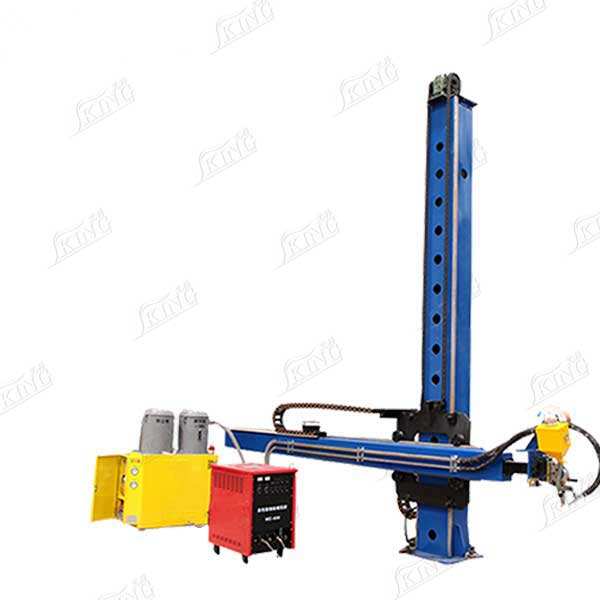Column welding stands as one of the most crucial skills in structural fabrication, requiring precision, expertise, and meticulous attention to detail. Whether working on industrial buildings, bridges, or architectural structures, proper column welding techniques ensure the integrity and longevity of the entire construction. Before diving into common mistakes, it's essential to recognize that column welding serves as the backbone of structural stability, making error prevention paramount.
One of the most devastating mistakes in column welding begins before the arc is even struck. Proper surface preparation is non-negotiable, yet many welders rush through this critical step. The surface must be thoroughly cleaned of all rust, mill scale, paint, and other contaminants. These impurities can lead to porosity, lack of fusion, and ultimately, structural failure.
Professional welders understand that investing time in surface preparation pays dividends in weld quality. This includes not only cleaning but also ensuring proper beveling and joint preparation. A properly prepared surface allows for optimal weld penetration and fusion, resulting in stronger, more reliable connections.
Another crucial preparatory mistake involves failing to properly assess the base material properties. Different steel grades require specific welding parameters, and misidentifying the material can lead to devastating consequences. High-strength steels, for instance, often need precise pre-heating and specific filler materials to prevent cracking and ensure proper fusion.
Experienced fabricators always verify material specifications and adjust their welding procedures accordingly. This includes checking material certificates, understanding the chemical composition, and selecting appropriate welding consumables that match the base material properties.
Managing heat input during column welding represents a delicate balance that many welders struggle to maintain. Excessive heat can lead to distortion, reduced material strength, and altered metallurgical properties. Conversely, insufficient heat results in lack of penetration and potential cold lap defects.
Successful column welding requires careful control of welding parameters including current, voltage, and travel speed. These factors must be continuously monitored and adjusted to maintain optimal heat input throughout the welding process. Professional welders develop a keen sense for heat input management through experience and proper training.
Misalignment during column welding can compromise the entire structure's integrity. Even small deviations from proper alignment can create stress concentrations that may lead to premature failure. This issue often stems from inadequate fit-up procedures or insufficient tacking before main welding begins.
Professional fabricators utilize proper measuring tools, levels, and alignment devices to ensure perfect joint alignment. They understand that taking extra time during fit-up prevents costly repairs and potential structural issues later.
Many welders underestimate the importance of systematic inspection during and after column welding. Visual inspection alone is insufficient for ensuring weld quality. Each critical joint requires thorough examination using appropriate non-destructive testing methods.
Professional quality control procedures include regular checks during welding, not just final inspection. This includes monitoring interpass temperatures, checking for proper penetration, and verifying weld profiles. Advanced inspection techniques such as ultrasonic testing or radiography may be necessary for critical structural components.

Failing to maintain proper documentation of welding procedures and parameters can lead to inconsistency and quality issues. Complete records of welding parameters, material certificates, and inspection results are essential for quality assurance and future reference.
Professional fabrication shops maintain detailed records of all welding operations, including procedure specifications, welder qualifications, and inspection reports. This documentation provides traceability and helps ensure consistent quality across all column welding projects.
Poor ventilation during column welding poses serious health risks and can affect weld quality. Proper ventilation systems must be in place to remove welding fumes and maintain good air quality in the work area. This is particularly crucial when working in confined spaces or with coated materials.
Professional welding operations invest in appropriate ventilation equipment and regularly maintain these systems to ensure worker safety and optimal welding conditions. They also implement proper respiratory protection programs when necessary.
Environmental conditions can significantly impact column welding quality. Exposure to wind, rain, or extreme temperatures can affect weld integrity. Many welders underestimate the importance of proper weather protection during outdoor welding operations.
Professional welding teams utilize appropriate sheltering and environmental controls to maintain consistent welding conditions. This includes monitoring ambient temperature and humidity levels, and implementing necessary precautions to protect the welding area.
The optimal temperature range for column welding typically falls between 50°F and 70°F (10°C to 21°C). However, this can vary depending on the material specifications and welding procedure requirements. Pre-heating may be necessary for certain materials, particularly in colder conditions or when working with higher-strength steels.
Professional welding equipment should be calibrated at least every six months, with more frequent calibrations if required by specific project specifications or if equipment performance issues are noticed. Daily checks of basic parameters and regular maintenance are also essential for consistent performance.
The most critical inspection points include checking for proper joint preparation before welding, monitoring interpass temperatures during welding, and performing comprehensive non-destructive testing after completion. Key areas include full penetration joints, intersections of multiple welds, and any locations subject to high stress concentrations.
Column welds should typically cure for at least 24 hours under normal conditions before any significant loading is applied. However, this time can vary based on factors such as material thickness, ambient temperature, and specific project requirements. Some high-strength applications may require longer curing periods or post-weld heat treatment.
 Hot News
Hot News2025-11-18
2025-11-24
2025-11-11
2025-11-05
2025-11-03
2025-10-28